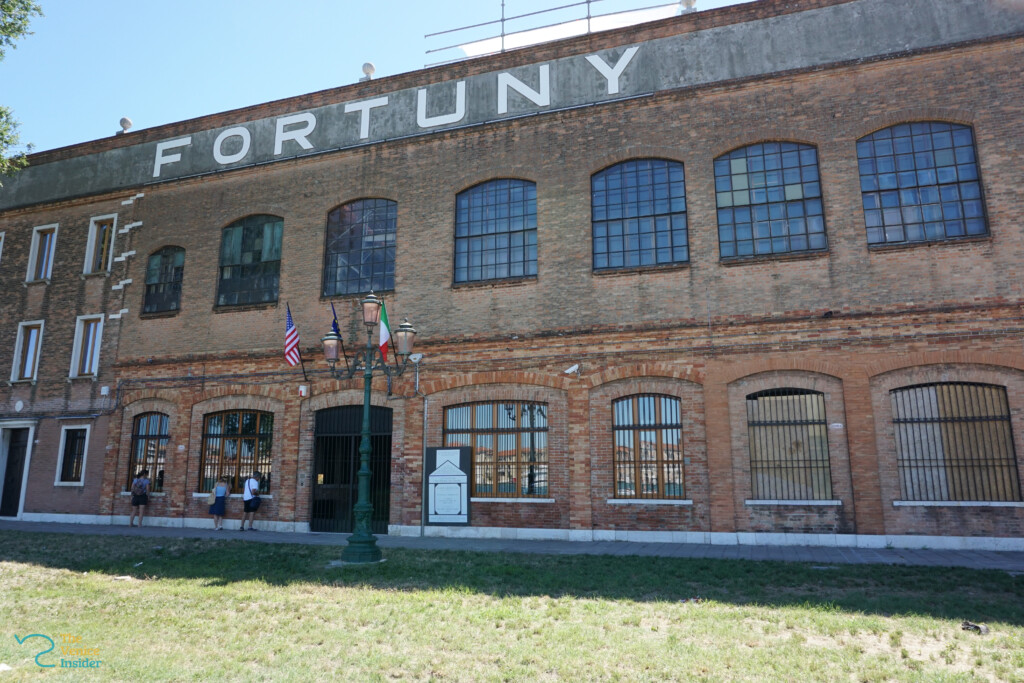Nestled in the heart of Venice, Palazzo Fortuny is a mesmerizing blend of history, art, and beauty. As my favorite palazzo in Venice, it never ceases to enchant me with its captivating atmosphere. The exhibitions are always top-notch, as the team has an amazing eye for selecting and curating beautiful exhibitions. The palazzo itself adds an extra layer of charm. In this post, I’ll share the history of Palazzo Fortuny, the legacy of Mariano Fortuny, and the current exhibition you won’t want to miss.
The rich history of Palazzo Fortuny
Originally built for Benedetto Pesaro in the mid-15th century, this gothic palazzo in Campo San Beneto, known as ‘Palazzo Pesaro degli Orfei,’ is a testament to Venetian tradition. With its grand rooms stretching from facade to facade, it has hosted numerous illustrious parties for princes, ambassadors, and noble ladies. However, by the late 19th century, it was converted into apartments for around 350 lower-class tenants.
In 1898, Spanish artist and fashion designer Mariano Fortuny fell in love with its architectural charm and moved into the attic. Over time, he acquired and restored the neglected palazzo, transforming it into his atelier for photography, stage design, textile design, and painting. Today, Palazzo Fortuny retains the unique rooms and structures created by Fortuny, adorned with precious decorations, paintings, tapestries, and personal collections, including his renowned stage lighting lamps (cupola). The dim-lit room on the first floor is an eclectic ‘wunderkammer’ filled with so much beauty, you won’t know where to start looking.
Donated to the city by Henriette Negrin, Fortuny’s widow, the Fortuny Museum opened its doors to the public in 1975. Since 2009, a restoration project has preserved its historical facade while modernizing it to meet contemporary museum standards. Now, Palazzo Fortuny stands as a perfect and authentic venue for art exhibitions in Venice.
The upper floors of Palazzo Fortuny are primarily dedicated to the legacy of Mariano Fortuny. You will discover his paintings, dresses, lamps, printed textiles, his printing press and workshop, … The ground floor hosts the temporary exhibitions, such as the one from Eva Jospin.


Mariano Fortuny: the magician of Venice
Born in Granada in 1871, Mariano Fortuny was the son of an artist and quickly immersed himself in the Parisian art world where he completed his studies as a painter. Moving to Venice at 18, he was profoundly influenced by Wagnerian Gesamtkunstwerk during a visit to Bayreuth. This led him to shift his focus from painting to set design and stage lighting, creating innovative systems adopted by major European theatres. At the beginning of the 20th century, he designed the sets for the Italian premiere of Tristan and Isolde at the Scala in Milan. Meanwhile, he began to develop his idea for the ‘cupola’ – a system of stage-lighting that would use indirect, diffuse illumination to free set design from the restrictions of traditional lighting. His system was produced in Berlin by AEG and adopted by major theatres throughout Europe.
Mariano Fortuny’s creative journey led him to produce fabrics and printed textiles, collaborating with Henriette Nigrin, who became his wife in 1924. His iconic plissé silk dress, the Delphos, earned worldwide fame. Drawing inspiration from various cultures, such as ancient Venice, Greece, Egypt, Florence, Persia, Asia, South America, and the Far East, his innovative methods and ancient techniques imbued his works with a timeless aura, earning him the title of ‘magician of Venice.’
His contributions extended to innovations like ‘Tempera Fortuny’ (colored photographic paper), and he worked on illuminating Venice’s renowned paintings in the scuole grandi (for example, Tintoretto’s work at the San Rocco and Capriccio’s at San Giorgio degli Schiavoni – see also ‘These stunning scuole grandi reveal the social history of Venice’).
Retiring in the late 1930s, Fortuny devoted himself to painting until his death in 1949. He is buried in Rome’s Verano cemetery alongside his famous father.


Selva by Eva Jospin: a must-see exhibition
The current exhibition, ‘Selva’ by Eva Jospin, is a must-see marvel in Venice. The monumental installation shows a doorway with two frames next to it, a corridor with built-in artworks and with a carved ceiling which wouldn’t be out of place in a Venetian palazzo. The other side of the installation resembles a forest, one of her favorite themes. The entire work is sculptured from cardboard, in line with her use of poor materials such as cardboard, plant-based elements, fibers or fabric. Each detail is meticulously crafted, inviting you to spend hours marveling at its beauty.
This exhibition is one of the impressive artworks included in ‘The insider guide to the Venice Art Biennale 2024’.



Fortuny factor: legacy of craftsmanship
The Fortuny factory and showroom are now located at the waterfront of the Giudecca Canal, next to the Hilton Molino Stucky. Mariano Fortuny moved his textile production from Palazzo Fortuny to this former convent and opened its doors in 1922. He started here to experiment with cotton, a material which was more readily available and cheaper than silk. The famous Fortuny fabrics are still produced at this original factory, on the original machines, using the same secret processes to treat cotton as developed by Mariano Fortuny a century ago. Today, the Riad family runs the factory, preserving its tradition of exquisite craftsmanship. You can find more information in my post ‘‘Giudecca: A peaceful island with 10 remarkable buildings‘.

When in Venice, don’t miss the chance to explore Palazzo Fortuny. Its enchanting atmosphere, rich history, and stunning exhibitions make it an unforgettable destination. Add it to your list – you won’t regret it.

thank you Katia, for another extremely interesting article
Thanks Josephine! I really appreciate your feedback.
Best regards
Katia
Fascinating information. Mille grazie.
Pamela,
Glad to read you like it 🙂
All the best
Katia